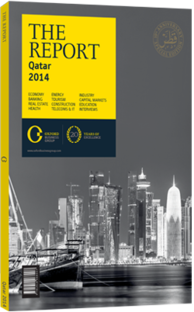OBG talks to Saad Ahmed Al Muhannadi, CEO, Qatar Rail

Interview: Saad Ahmed Al Muhannadi
Which parts of the Doha Metro Project take priority for completion for the 2022 FIFA World Cup? When is the work slated to start and finish?
SAAD AHMED AL MUHANNADI: The Qatar Rail Development programme (QRDP) is not being carried out for the 2022 FIFA World Cup alone. Qatar as a nation has long wished to have a high-quality rail network to directly support Qatar National Vision 2030. This is what drives the QRDP. Qatar Rail is a key element to many transformational projects under way across the state. True, these will service the 2022 FIFA World Cup, but they are fundamentally being built for the people of Qatar. The Doha Metro Project is one of Qatar Rail’s three core components. It is to be built in two phases and consist of four main lines: Red, Green, Gold and Blue. The design phase is finished; the “enabling works” phase is under way and due to finish in early 2014. For the construction phase that began in 2013, the Red Line has been split into two sections, Red Line North and Red Line South. Completion of phase one construction is scheduled for the end of 2019 and will connect areas of high demand. The phase two completion date will be decided based on demand and project progress.
What is the total value of recent awards for phase one? What remains to be awarded and tendered?
AL MUHANNADI: The total value of the recent contract awards for phase one, the design-and-build phase, is about QR42bn ($11.5bn). In 2013, four major underground civil engineering packages were awarded and contracts signed: Red Line North, Red Line South, Green Line and Major Stations. The Gold Line is also to be awarded soon. These are in addition to the project management consultant (PMC) contracts and the enabling works contracts awarded in 2012. As things now stand, we are in the tendering stage for three elevated, at-grade civil works packages. Besides that there is the systems, rolling stock, and track-work package, for which we recently released a PMC tender, and which includes design verification along with project management. This comprises the entire phase one network and ensures that we have one integrated supplier. We are also in the final stages of evaluation for our shadow operator tender. All of the aforementioned are for phase one, where the only major contract remaining is the operator and maintainer contract. This one will be released in about two years and awarded a few months before the network is commissioned.
Aside from the metro, what other projects are being developed under the purview of Qatar Rail?
AL MUHANNADI: QRDP envisions a long-distance passenger and freight rail network to connect the big cities and industries of Qatar, as part of the planned GCC rail network linking the six Gulf states. We propose to develop this network in three phases to meet commitments to the GCC and demand for domestic passengers and cargo. Phase one consists of building a shared railway line from the border of Saudi Arabia to Mesaieed Port (New Port Project) via Doha South International, which will be the passenger station in Qatar in phase one. The preliminary design services were awarded to Systra-Parsons JV in 2013. This will be followed by the construction tender due for release soon. We are also in the process of choosing the preferred “road sector programme support” supplier for the Lusail Light Rail Transit, whose final phase will cost more than QR8bn ($2.2bn). We expect this phase to be funded by the state.
To what extent is Qatar Rail prioritising Qatar’s connection to the GCC network, in particular the rail link via the Qatar-Bahrain Causeway?
AL MUHANNADI: Each GCC member state has agreed to building the GCC Mainline for freight and passenger services as part of a clear timeframe, with the first intra-Gulf train expected to be running by the end of 2018. The section of the GCC Mainline running from Qatar to Bahrain via the Causeway Bridge will be part of phase two for the long-distance project, which will start in 2014 and is scheduled for completion in 2021.
You have reached the limit of premium articles you can view for free.
Choose from the options below to purchase print or digital editions of our Reports. You can also purchase a website subscription giving you unlimited access to all of our Reports online for 12 months.
If you have already purchased this Report or have a website subscription, please login to continue.

